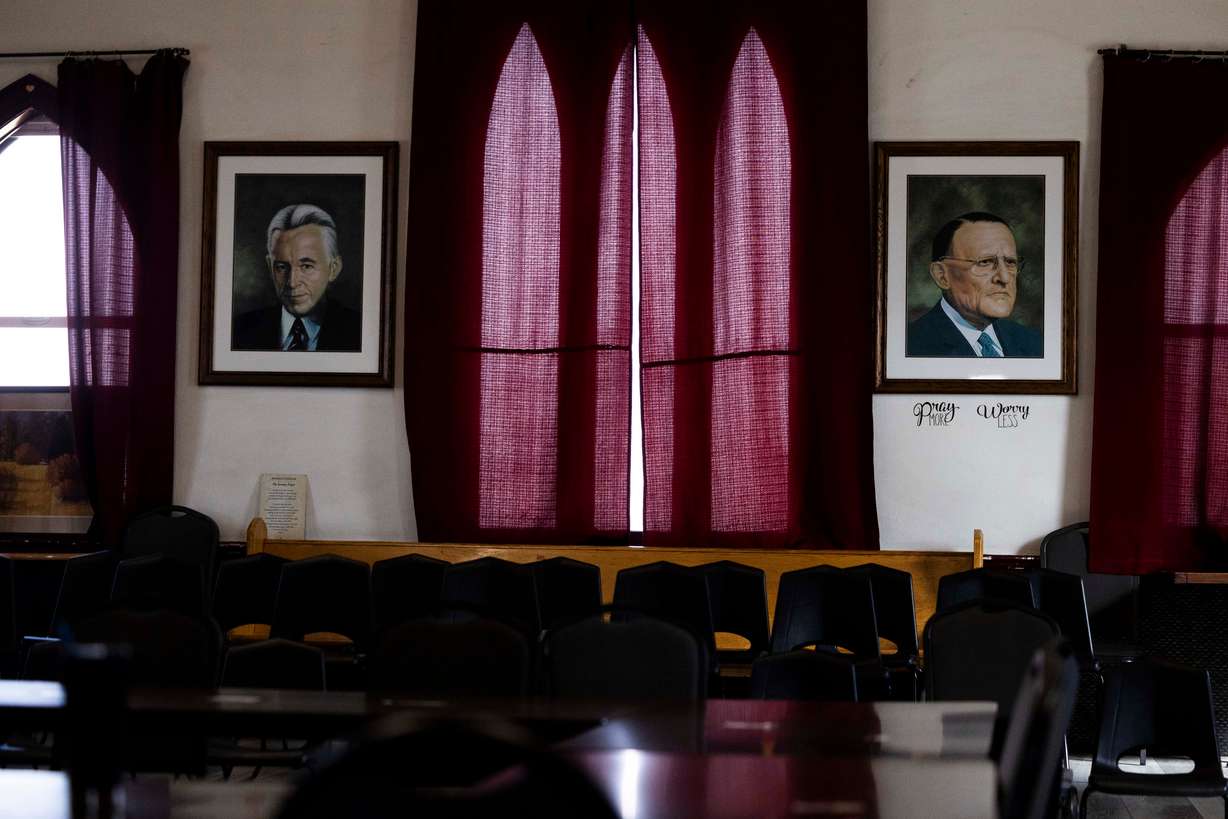Estimated read time: 6-7 minutes
- The Alano Club in Murray supports addiction recovery in a historic building.
- Despite funding challenges, the club continues to rely on donations to operate.
- Founded in 1965, over 5 million people have sought help at the club.
MURRAY — With its Gothic-arched windows and square entrance tower built like a castle with its merlons and crenels, the unique former Latter-day Saint church building that sits between the Jordan River and the railroad tracks in Murray in the middle of Salt Lake Valley represents the hundreds of people who walk through its doors 365 days a year — in need of being rebuilt and support.
Built in 1909, the church building is no longer used for religious worship. Since the 1960s, it has been home to the Alano Club, where people who are fighting alcohol and drug addiction come to find support. The Church of Jesus Christ of Latter-Day Saints was in the process of selling the property to developers when a group of recovering alcoholics, headed by David Aste, approached the church's president at the time, David O. McKay, asking to halt the sale and instead allow them to rent it as a location for Alcoholics Anonymous.
The church leadership agreed, realizing "this (AA) would be a savior of souls."
The Alano Club purchased the building from the church in 1977.
During this past Utah legislative session, the club's board president, Shurone Hills, went before lawmakers asking for $1.4 million for necessary capital improvements to the building's infrastructure and to help sustain the nonprofit's resources.
Though they didn't receive the funding, Hills told the Deseret News that the club will continue to depend on donations and grant funding to stay afloat. Every now and then, the club receives an anonymous donation, sometimes $50,000 to $100,000.
"We'll just continue to try to do what we've always done. We'll stay open. We just won't get the upgrades that we need," Hills said. Emphasizing why the request was necessary, she added, "We do so much work as far as value for the state is concerned because of the ripple effect of the lives that are changed here. I don't know how we would ever measure the impact."
In her presentation to lawmakers last month, Hills said that "since 1965, over 5 million people have walked through our doors at the Alano Club to find the support they need to overcome addiction and rebuild their lives. The Alano Club is a historic home for healing."

The healing power of AA
The genesis of Alcoholics Anonymous began in 1935 in Akron, Ohio, when two men were looking for a successful way to end their addiction. They found that a support group was the most beneficial way, and later on, they developed the 12 steps to sobriety.
On a Wednesday afternoon, more than 70 people sat in the former Latter-day Saint church building for a one-hour meeting for newcomers, old-timers and anyone in between their sobriety journey.
"It's a huge group of people that wouldn't normally mix together from all different areas of life and different experiences with addictions," Hills said. People filled every donated seat in the room, surrounded by antique walls covered in inspirational quotes.
Every AA club has its own way of doing things. The Wednesday meeting in Murray began with a moment of silence for those suffering from addiction. Then, the sobriety birthday celebrations began. The room roared with support as people shared how many days, months or years they'd gone fully sober. The "Happy Birthday" song was sung for those who had reached one year. Coin-like chips were passed out, and the length of sobriety they'd reached was labeled on them.
Every time someone spoke, they said their first name only, followed by "and I'm an alcoholic," even if they'd been sober for years.
Lance, who has been sober for 32 years, said it's "because I'll always be an alcoholic. It's a disease. It's like being a diabetic. This is my insulin. And working with my sponsor is another dose of insulin I have to take."

"I've known many, many people that have had 10, 20, 30, 40 years of sobriety, and they stop being a part of the community, and they go back out and they die. We see it a lot."
On Aug. 18, 1992, Lance made it through his first day of sobriety. He's been going to meetings at the Alano Club and staying sober since, but it's never easy. He likened his addiction as the Mr. Hyde to his Dr. Jekyll.
"I was this different dude," he told the Deseret News. "But when I got into sobriety, a home group, and they said, 'You need to stay sober the rest of your life.' I went, 'How's that going to be possible the rest of my life?'"
"One day at a time, sometimes one hour at a time," he said. "Get a sponsor, get a home group, and work the program every day."
In 2020, a study done by a Stanford School of Medicine researcher, a researcher from Harvard Medical School and a researcher from the European Monitoring Center for Drugs and Drug Addiction found that AA was the most beneficial way for an addict to quit addiction. Even more beneficial than therapy.
The main reason the researchers found it most successful is its social aspect. "If you want to change your behavior, find some other people who are trying to make the same change," chief researcher Keith Humphreys said, per the Stanford Medicine News Center. "It absolutely does work."

Only caring about living
At 65, Pine is a living testament to how AA can improve a person's life, and it is a key reason he is alive today.
On Dec. 18, 2010, weighing 565 pounds, Pine was given a choice by his doctors: He could either stay in the hospital and die or go home and die there. When his mother asked if her son could get a liver transplant, the doctor replied, "We quit giving away livers to rich people when Mickey Mantle went through two of them and still died," Pine told the Deseret News.
According to VCUHealth, most candidates in need of a liver transplant have to go through a sobriety period — known as the six-month rule — to demonstrate the patient is committed to improving their health.
Pine has lost 402 pounds naturally since the day that they sent him home to die.
When he first started coming to AA meetings, Pine said he couldn't stay sober at night, so his sponsors recommended that he volunteer at the Utah State Penitentiary. "Best advice that I ever had in my life," he said during the group meeting. "Because for five days a week, for 13 plus years, I took meetings into the prison, and I learned to understand. I never knew that people had to eat out of dumpsters. I didn't realize that people would trade their children for drugs. I didn't know any of that stuff. All I knew was how to drink."
"There's nothing that Alcoholics Anonymous, if you truthfully want it, there's nothing this can't give you," he added.
"It can give you that peace of mind that we've lost since we were children, that 565-pound thing that I'd become was nothing more than a whole bunch of weight to cover up a little boy that was scared, that didn't know how to live life. I thank God for AA."











